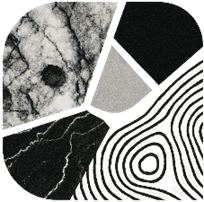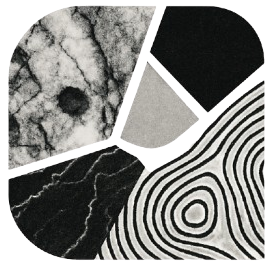Why finishes matter
A finish is the way the stone surface is treated, and it directly affects how marble looks, feels to the touch, behaves in wet areas, shows everyday marks, and how much maintenance it needs. From mirror-like gloss that makes the stone “light up” to velvety texture that hides fingerprints, the finish changes not only the aesthetics but also the day-to-day experience — on a kitchen countertop, in a bathroom, on a floor or on a wall. The same Estremoz in polish and in satin are two very different characters.
Polished: the showcase effect and the rules of the game
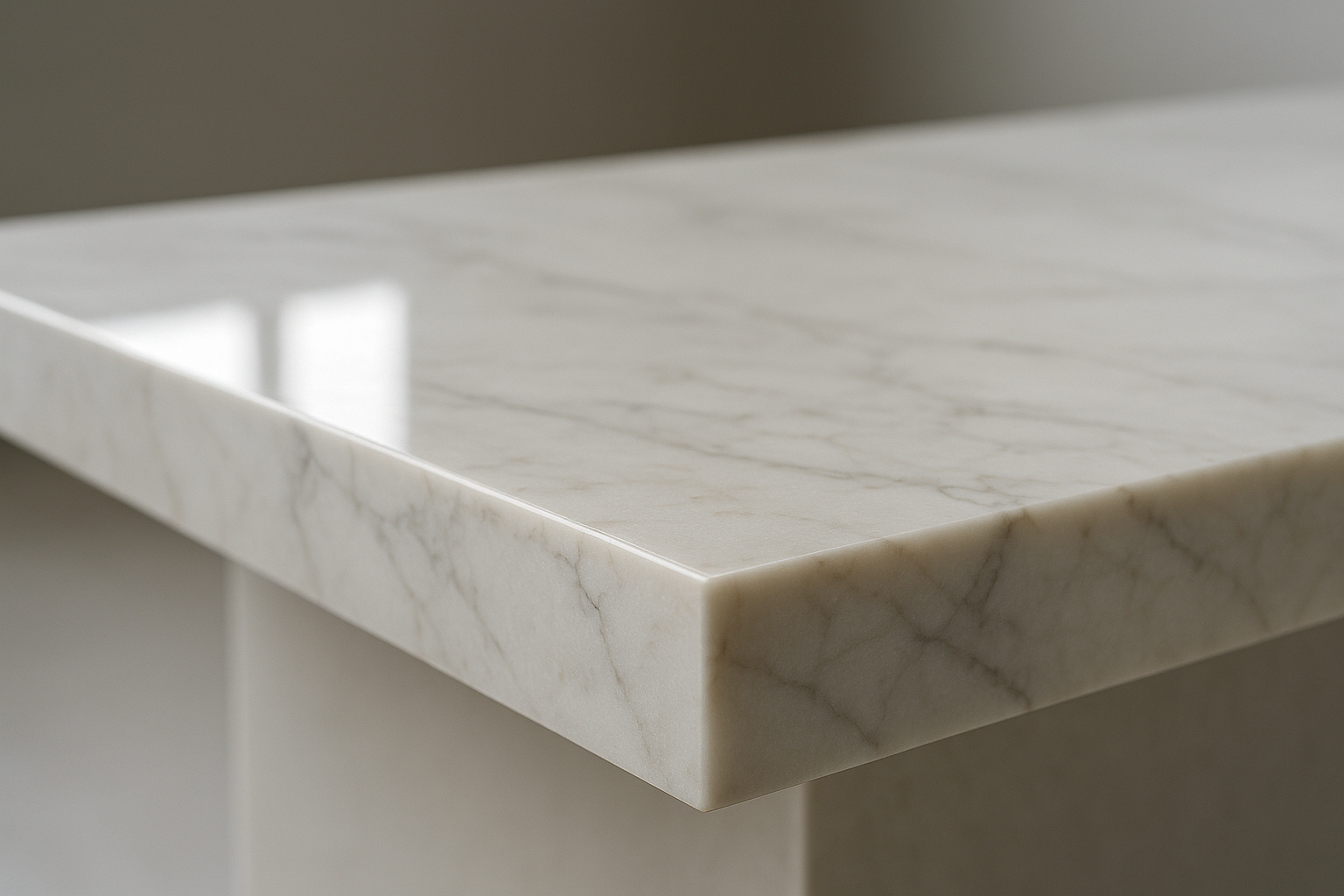
Polished marble delivers strong gloss and maximum depth of pattern. Colours read richer, veining looks more contrasty, and reflections become part of the composition. The smooth surface wipes clean easily: dust and splashes don’t cling, and with simple routine care it stays impeccable.
There are a few things to keep in mind. In wet zones and on exterior steps, polish can be slippery; in bright lighting it may create intrusive glare. Micro-scratches and etching from lemon, vinegar or red wine are more visible on a glossy “mirror.” That’s why polished stone is often chosen for walls, fireplaces, window sills and countertops when used mindfully — where the “lacquered” look matters more than masking marks.
There are a few things to keep in mind. In wet zones and on exterior steps, polish can be slippery; in bright lighting it may create intrusive glare. Micro-scratches and etching from lemon, vinegar or red wine are more visible on a glossy “mirror.” That’s why polished stone is often chosen for walls, fireplaces, window sills and countertops when used mindfully — where the “lacquered” look matters more than masking marks.
Honed: calmness and versatility
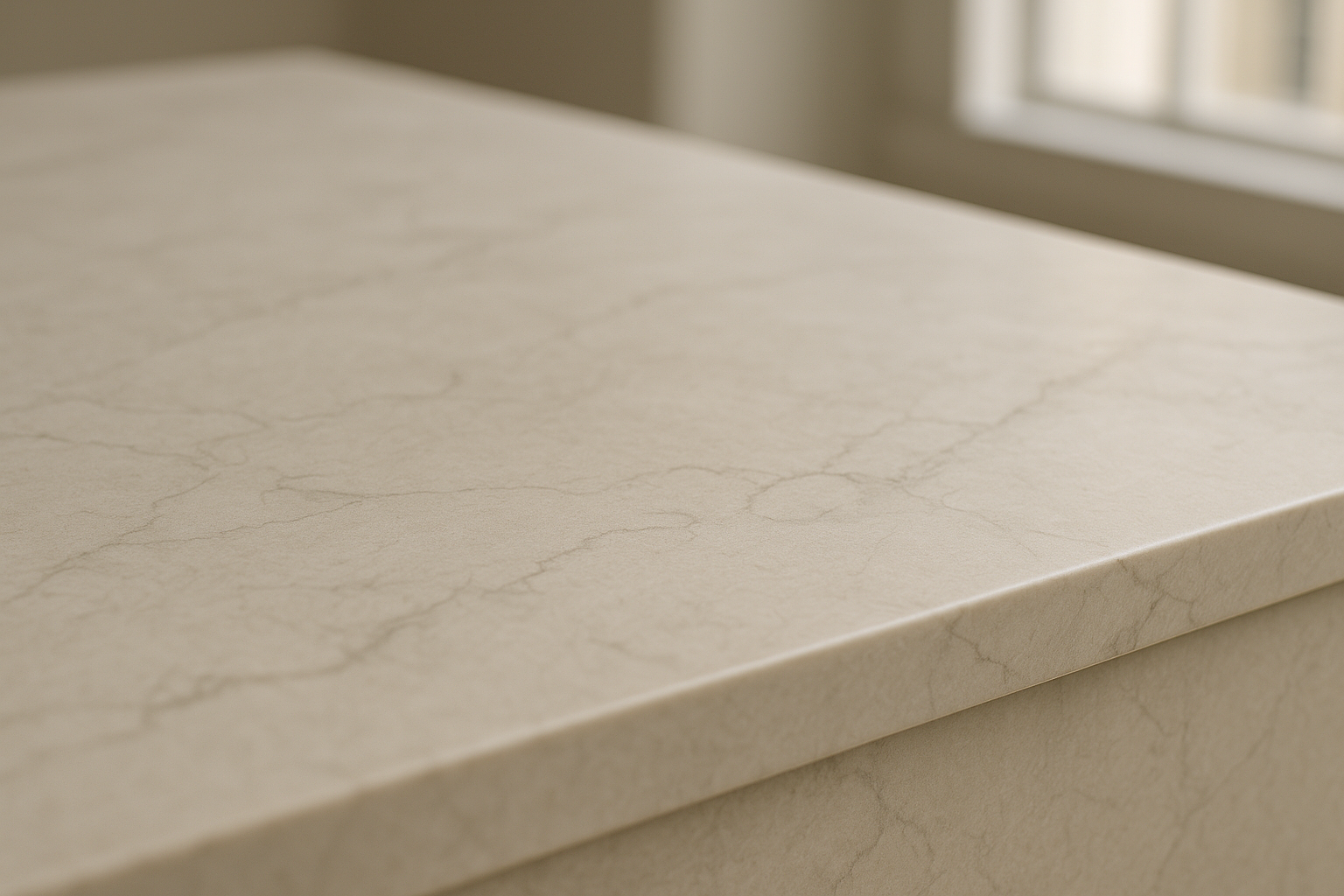
Honed removes the mirror effect and softens the way the pattern reads. The stone feels “warmer” to the touch, glares less and hides small everyday imperfections better. In real-world projects, honed often becomes the sensible default for floors, stairs and kitchen zones.
Honed does ask for discipline: periodic sealing helps reduce absorption and keep stain resistance high. In return you get a quiet, refined surface that behaves predictably and rarely fights the light.
Honed does ask for discipline: periodic sealing helps reduce absorption and keep stain resistance high. In return you get a quiet, refined surface that behaves predictably and rarely fights the light.
Satin: the golden mean for contemporary interiors

Satin is a semi-matte finish that sits between gloss and matte. Highlights stay soft without a mirror, while the pattern reads deeper than on honed. The surface feels silky; everyday marks are moderately visible and don’t demand constant polishing.
Homeowners often pick satin for kitchens and islands: it photographs beautifully, forgives active use, and still looks expressive. Satin can cost a bit more and may be made to order, but on the axis of “aesthetics vs. practicality” it’s a genuinely convenient middle ground.
Homeowners often pick satin for kitchens and islands: it photographs beautifully, forgives active use, and still looks expressive. Satin can cost a bit more and may be made to order, but on the axis of “aesthetics vs. practicality” it’s a genuinely convenient middle ground.
Leathered: tactile drama with fewer fingerprints
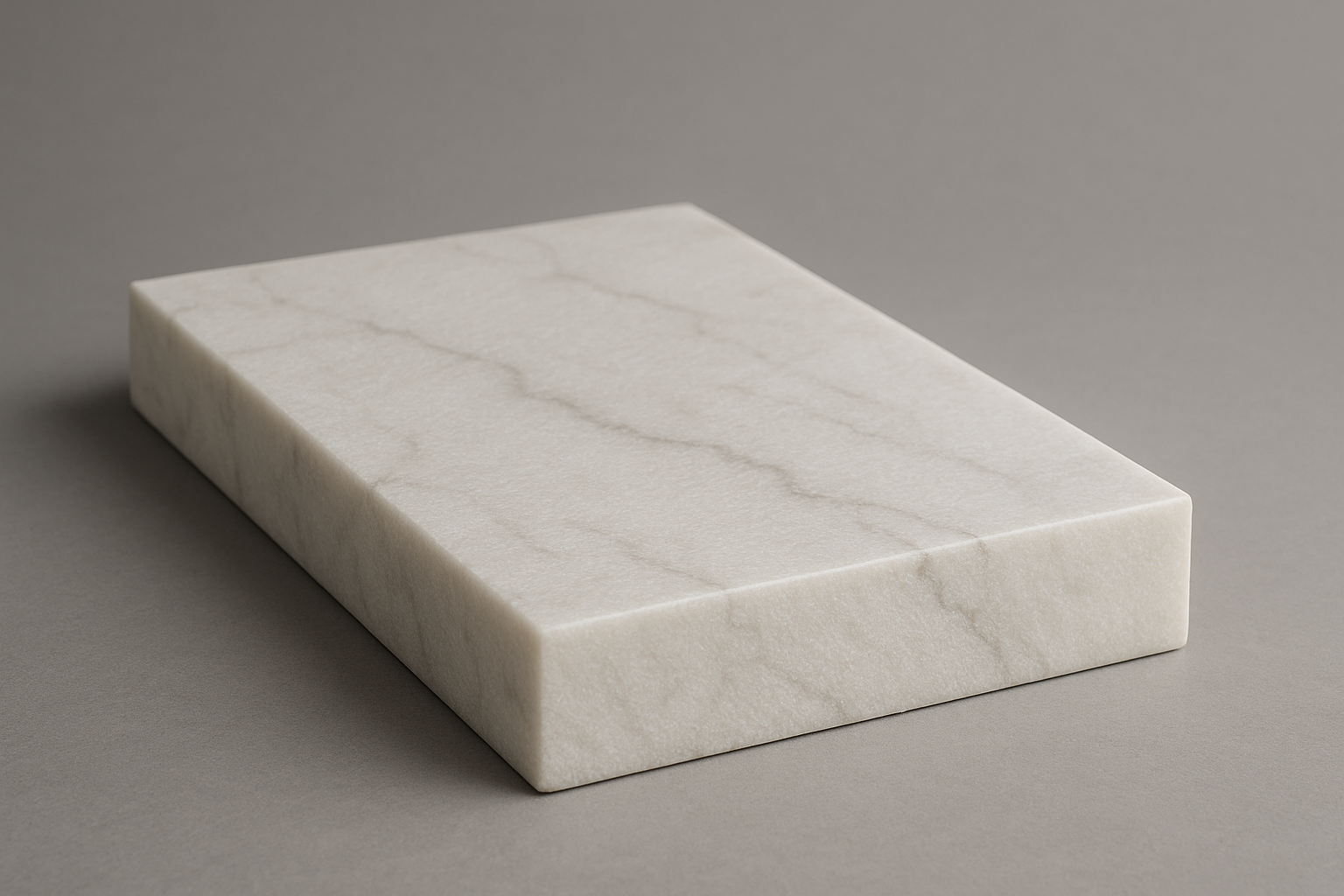
Leathered creates a velvety micro-relief with subdued sheen. It barely glares, offers better grip underfoot and noticeably masks fingerprints and minor scratches. The finish is ideal for dark stones on countertops and bar tops, for backsplashes and feature walls.
The texture deserves mindful cleaning: dust and crumbs are easier to remove with a brush or vacuum, and periodic sealing will keep stain resistance high. If you value tactility and want to add a “script of touch” to the interior, leathered is a sure bet.
The texture deserves mindful cleaning: dust and crumbs are easier to remove with a brush or vacuum, and periodic sealing will keep stain resistance high. If you value tactility and want to add a “script of touch” to the interior, leathered is a sure bet.
Brushed: gentle patina without showy “ageing”
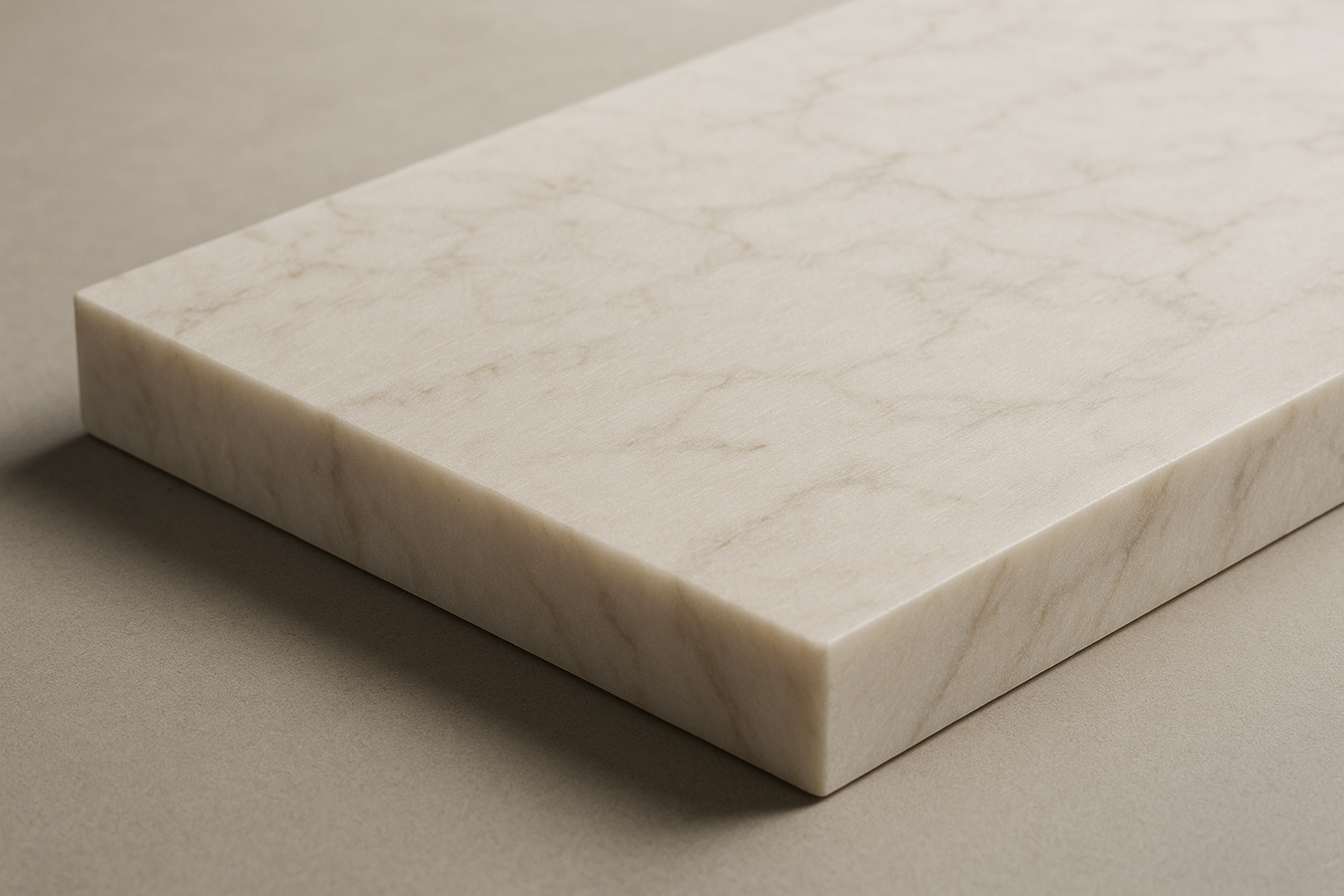
Brushed gives the stone a lightly time-softened texture. The relief is less pronounced than leathered, but the hand still feels a natural grain, and the eye reads character without aggression. Brushed is great where you want subtle texture: on floors, window sills and worktops.
Like other non-classic finishes, brushed benefits from regular care and sealing. In exchange it handles everyday life gracefully: signs of use don’t jump out, and the stone looks alive rather than “varnished.”
Like other non-classic finishes, brushed benefits from regular care and sealing. In exchange it handles everyday life gracefully: signs of use don’t jump out, and the stone looks alive rather than “varnished.”
How to match finish and application
In kitchens, safety and mark-hiding come first. Satin and honed offer comfortable tactility, calm reflections and moderate tolerance to everyday traces. A leathered countertop gives confident grip, shows fewer fingerprints and visually flatters darker tones. Polish is absolutely possible if you’re ready for mindful use and regular protection.
In bathrooms and showers, grip and moisture behaviour matter. Floors and steps make sense in matte or textured finishes, while walls can stay glossy or satin. On terraces and exterior flights, gloss almost always gives way to matte and texture: safety and legibility in any weather matter more.
Walls, fireplace surrounds and panels let you play with aesthetics. Want maximum “depth” and mirrors? Choose polish. Prefer refinement without glare? Go satin or honed.
In bathrooms and showers, grip and moisture behaviour matter. Floors and steps make sense in matte or textured finishes, while walls can stay glossy or satin. On terraces and exterior flights, gloss almost always gives way to matte and texture: safety and legibility in any weather matter more.
Walls, fireplace surrounds and panels let you play with aesthetics. Want maximum “depth” and mirrors? Choose polish. Prefer refinement without glare? Go satin or honed.
Light, pattern and the stone’s “readability”
Finish changes how marble interacts with light. Polish boosts contrast and saturation but will “catch” sunbeams and point lights. Honed diffuses light softly, and satin keeps depth without mirroring. In long corridors and on stairs where light falls at an angle, matte and satin read more evenly, while textures add a pleasant rhythm.
A practical trick: view the slab in daylight and in warm evening light. The same Estremoz Satin can feel cooler by day and warmer by night, and the choice of finish easily becomes part of your lighting design.
A practical trick: view the slab in daylight and in warm evening light. The same Estremoz Satin can feel cooler by day and warmer by night, and the choice of finish easily becomes part of your lighting design.
Care and sealing without the drama
All calcitic marbles are sensitive to acids. Polish shows etching more, while honed and satin mask it better but don’t cancel the chemistry. The solution is simple: periodic sealing, neutral pH stone cleaners, and wiping fresh spills promptly. Textured surfaces don’t need “more” care so much as the right care: a brush and vacuum work better than endless wipes.
Sealing isn’t a suit of armour, but it materially improves everyday resistance. We recommend it for kitchens almost always; for showers and outdoor areas we add anti-slip treatments when the brief calls for it.
Sealing isn’t a suit of armour, but it materially improves everyday resistance. We recommend it for kitchens almost always; for showers and outdoor areas we add anti-slip treatments when the brief calls for it.
Price, lead times and availability
Polished and honed are most often in stock in standard 20 and 30 mm. Satin, leathered and brushed are frequently made to order, so timelines are a bit longer and processing costs higher. Totals depend not only on finish and thickness but also on edge build-up, number of cut-outs, part sizes and waste percentage at fabrication. Sometimes it’s smarter to choose a more accessible honed slab and invest in a complex edge or perfect vein-match — the visual impact can beat an “expensive” surface alone.
Small experiments at the slab yard
There are safe ways to see how a surface behaves in daily life. On a separate sample — not your future countertop — check how quickly water absorbs and how a droplet holds shape on satin; how easily a marker trace wipes from polish; how leathered disguises a fingerprint. Even a simple “try-on” under different lighting scenarios tells you more than a dozen photos.
Common mistakes and how to avoid them
The most common mistake is choosing polish for the wow-effect without accounting for glare and slip. Second is expecting sealing to make marble fully immune to acids. Third is underestimating texture: many fear cleaning, although in practice a well-chosen leathered or brushed asks no more attention than a normal kitchen. The best strategy is to match the finish to lifestyle, lighting and room use — then confirm the choice on real samples.
What we do at Stone To Homes
We prepare samples in several finishes and lay slabs out in dry-lay so you see the full pattern and approve vein-matching or book-matching. If needed, we do a test seal and give clear care recommendations. Where projects ship outside Portugal, we agree packaging, labelling and unloading requirements in advance.
To start, just send a plan and describe how each surface will be used. We’ll propose the stone and finish for your scenario — from glossy “lacquer” to velvety tactility — and support the project from our Alentejo yard to your finished interior.
To start, just send a plan and describe how each surface will be used. We’ll propose the stone and finish for your scenario — from glossy “lacquer” to velvety tactility — and support the project from our Alentejo yard to your finished interior.
